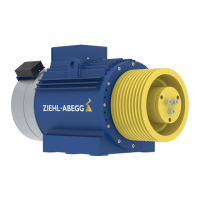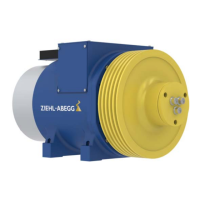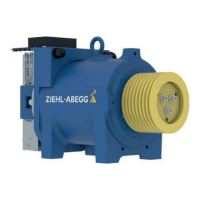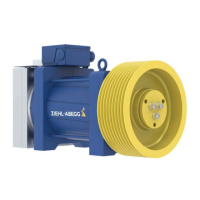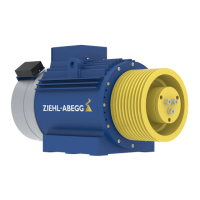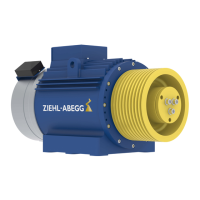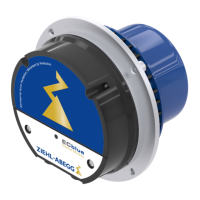5.5 Brake
Brake type ROBA®-twinstop® (RTW), size 800, 2 x 800 Nm
•
Also refer to the operating instructions for the brake.
5.5.1 Operational area
•
The brakes are intended for static applications as holding brakes. Dynamic braking must be
restricted to emergency and inspection braking. No wear occurs on a holding brake. This means
that the brake is maintenance free, and only the air gap has to be checked as described in the
“Maintenance and repair - Inspection intervals - Checking the air gap” chapter.
5.5.2 Mechanical releasing
Mechanical release of the brakes is possible by using the manual hand release available as an option.
A brake with a mechanical hand release system is available optionally. The hand release system
cannot be fitted later. The complete brake must be replaced to retrofit the hand release system.
The brake circuits can be released separately from each other with a mechanical hand release
system.
5.5.3 Release monitoring
•
The brake release monitoring serves as monitoring for redundancy and the operation status of the
brakes.
•
The brake release monitoring has to be evaluated; otherwise the type certificate is not
fulfilled! The change of state of both brake circuits have to be monitored separately.
•
Release monitoring for the brakes is carried out by a microswitch or inductive proximity switch. For
technical data, see chapter "Appendix - Technical data - Microswitch or inductive proximity switch".
5.5.4 Brake control
5.5.4.1 Contactorless - ZAsbc4
Electronic and noise-free activation of the brake.
The brake operating mode is set on site.
For information on installation and commissioning, refer to the ZAsbc4 operating instructions.
5.5.4.2 Electromechanical contactors
Brake type RTW 800
Operating voltage 207 V
Rectifier Bridge rectifier*
Table 5-5-4-2
* Bridge rectifier is not included in the scope of supply,
it is available as option from
ZIEHL-ABEGG SE as item 00154988
To reduce noises during brake disconnect the brakes should be switched to the alternating current
side (K4), while normal operation. The brakes are switched-off slower and thus quieter through the
rectifier.
To ensure instantaneous brake application in emergencies, during inspection operation and return
ride use a second contactor (K3), which disconnects the brake from the direct current side. Integrate
this contactor into the safety circuit.
Translation of the original operating instructions
ZAtop – model series SM200.40E/SM200.45E Electrical installation
A-TBA21_01-GB 2021/30 Index 003 Part.-No. 01013507-GB (EU-BD 1112)
20/64

